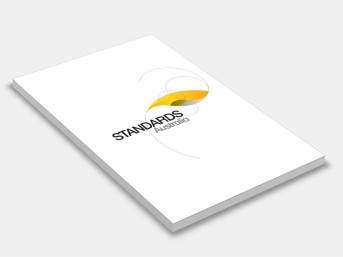AS 3740-2010 Waterproofing of domestic wet areas
Standards Australia
Supersedes: AS 3740-2004 Waterproofing of wet areas within residential buildings
Draft Designation: DR 09057This Standard was prepared by the Standards Australia Committee BD-038, Wet Areas in Buildings, to supersede AS 3740—2004, Waterproofing of wet areas within residential buildings.
This Standard incorporates Amendment No. 1 (December 2012). The changes required by the Amendment are indicated in the text by a marginal bar and amendment number against the clause, note, table, figure or part thereof affected.
The objective of this Standard is to set out the criteria for waterproofing wet areas within domestic buildings. It gives minimum requirements for materials, designs and installations.
The objective of this revision is to bring this Standard in line with the current waterproofing practices in the building industry.
Originated AS 3740—1989.
Since the last edition of this Standard was published in 2004, it had become increasingly apparent that various methods for design and installation of waterproofing systems outlined in the document no longer represented minimum acceptable standards and a further review was required. In this document, the Committee has attempted to address these shortcomings.
This revision is intended to cover the treatment of wet areas within domestic buildings in a form that makes the application of accepted methods more relevant to the various risk levels, while presenting typical detail diagrams relevant to those applications.
Problems with waterproofing defects relate to a number of fundamentals, including the following:
(a) Workmanship.
(b) Understanding of material technology/properties.
(c) Applicator skill and competence.
(d) Application to a variety of use situations.
(e) Changes in design trends.
(f) Quality control, including supervision, inspection and testing.
(g) Maintenance of waterproofing medium when disturbed.
(h) Fixture of fittings after waterproofing and tiling.
(i) Professional attitude and a desire to continuously improve without compromising quality, performance and contractual obligations (where they exceed minimum requirements).
This Edition of the Standard differs from the 2004 edition in that the Design Section has been removed and included in the Building Code of Australia (BCA).
Contents:
Section 1: Scope And General
Section 2: Materials
Section 3: Installation
Appendix A: Design Considerations In Wet-area Waterproofing
Appendix B: Falls In Floor Finishes
Appendix C: Extent Of Waterproofing
Wet Areas in Buildings.
BD-038
Architectural Aluminium Fabricators Association (NSW); Australian Building Codes Board; Australian Chamber of Commerce and Industry; Australian Consumer Association CHOICE; Australian Institute of Building Surveyors; Australian Institute of Waterproofing; Australian Tile Council; Building Research Association of New Zealand; Business New Zealand; CSIRO, Manufacturing and Infrastructure Technology; Engineered Wood Products Association of Australasia; Federation of Wall and Ceiling Industries Australia and New Zealand; Housing Industry Australia; Institute of Materials Engineering Australasia; Master Builders Australia; Planning South Australia; South Australia Housing Trust; TAFE NSW; Timber Queensland.
